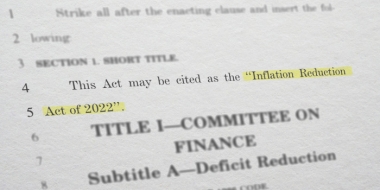In this article
- My health insurance company is leaving the market in my area. What should I do?
- How do I choose a new exchange plan?
- When can I enroll in a new plan if my carrier is exiting the market?
- Will I still receive a premium subsidy if my carrier exits the market?
- Do I still need to pay my premium if my carrier is exiting the market?
- Should I let my exchange auto-enroll me in a new health plan?
- How widespread are carrier exits?
- It pays to look at replacement health plan options.
Over the years, there has been quite a bit of fluctuation with insurer participation in various areas, with some insurers exiting certain markets and others entering. This summer, several states announced that Colorado-based Friday Health Plans will wind down its business by the end of 2023. Oscar Health has also announced that it will be exiting the individual ACA market in California for Plan Year 2024.
My health insurance company is leaving the market in my area. What do I need to do?
If you have an individual/family and your insurer is leaving the market in your area, you need to select a new health plan. The termination of your old plan will trigger a special enrollment period that will allow you to sign up for a new individual/family plan. The special enrollment period will allow you to have uninterrupted coverage as long as you pick a new plan no later than the last day that your old plan is in effect (assuming the old plan ends on the final day of a month).
Your special enrollment period will also continue for 60 days after the old plan ends. But if you enroll during that window, you’ll have a gap in coverage, as the new plan will not be retroactively effective. Coverage will take effect as early as the first of the month following your enrollment.
(If an employer-sponsored health plan is available to you, the loss of your individual/family plan would trigger a special enrollment period for the employer-sponsored plan. The rules are different for SEPs for employer-sponsored health plans.)
How do I choose a new exchange plan?
If your insurer is leaving the market, you’ll need to pick a new health plan. Here are some tips for picking the plan that will best fit your needs and budget. If you’re undergoing treatment for a health condition, you’ll want to make sure that the new plan includes your doctors in its network and your prescriptions in its formulary.
In most cases, carriers exit the market at the end of the year, which means you’d have been starting over with a new deductible and out-of-pocket maximum on January 1 even if your plan had been able to renew. (All ACA-compliant individual/family health plans follow the calendar year.) If your carrier is leaving the market mid-year, you’ll need to prepare yourself for the fact that you’ll likely be starting over at $0 in out-of-pocket spending when your new plan takes effect.
When can I enroll in a new plan if my carrier is exiting the market?
Your special enrollment period starts 60 days before your plan ends, and continues for 60 days after it ends. In most cases, this is centered around the end/start of the new calendar year. But if your carrier is exiting the market mid-year, your special enrollment period will depend on when your plan ends.
Regardless of whether the carrier exits the market at year-end or mid-year, you need to enroll in a new plan before your old plan ends in order to have uninterrupted coverage. If you enroll during the 60 days after your plan ends, you’ll have a gap in coverage, as the new plan will not have a retroactive effective date.
Will I still receive a premium subsidy if my carrier exits the market?
If you choose a new plan through the Marketplace, you will be required to prove your eligibility for a subsidy. You should remain eligible if none of your circumstances have changed (income, dependents, employment benefits, etc). However, the amount you pay each month will likely change, depending on the cost of the new plan you select.
And if the new plan is taking effect on January 1, the amount of your subsidy will also change if the price of the benchmark plan in your area has changed for the new year. Here’s how the premium subsidy math works, and here’s a subsidy calculator you can use.
Do I still need to pay my premium if my carrier is exiting the market?
Yes, you need to continue to pay premiums when they’re due in order to keep your coverage. In most cases, carrier exits happen at the end of the year, so you’ll pay your premiums through December 31. (If you stop paying your premiums, your policy will terminate once your grace period ends.)
Should I let my exchange auto-enroll me in a new health plan if my carrier is exiting the market?
In general, no. If your carrier is exiting the market at the end of the year, it’s generally an option to let the exchange automatically select a new plan for you that will start on January 1. In the opinion of the author, it may not be in your best interest to rely on the exchange’s algorithm. Instead, you may be better served by selecting your own replacement plan that most closely meets your needs.
There are times in which there is no mechanism for automatic re-enrollment mid-year. Therefore, it is important to understand options available to avoid becoming uninsured.
If your carrier is exiting the market on December 31, here’s how the automatic re-enrollment process works if you don’t select your own replacement plan by December 31:
- If you bought your existing coverage through the marketplace in your state, the exchange will select a new plan for you if you don’t take any action. The protocol that’s used in most states essentially moves people to the lowest-cost plan that has the same metal level (or potentially a Silver plan if the person is eligible for cost-sharing reductions), product type (HMO, EPO, PPO, or POS), and provider network as the plan that’s terminating. Note that HHS has finalized some changes to the auto-renewal/re-enrollment protocol, starting in 2024.
- If you obtained your existing coverage outside the exchange, there is no entity that can automatically select a new plan for you if your insurer is leaving the market. If you don’t pick your own replacement plan, you’ll be uninsured on January 1. If your carrier has been bought by another carrier, the new carrier may transition you to one of their plans.
But again, even if you have a plan that you obtained through the exchange, you may not want to rely on the exchange to pick a new plan for you using an automatic algorithm. They won’t be able to prioritize the coverage aspects that are most important for you, which might include having an HSA-qualified plan, or a certain out-of-pocket structure.
How widespread are carrier exits?
Over the years, carrier exits have been quite common in some years and rare in other years. There were widespread carrier exits in 2017 and 2018, but they were much less common for the next few years. (Carriers entering the markets became the norm starting in 2019.)
There were some significant insurer exits at the end of 2022, including Bright HealthCare, which covered nearly a million people on its individual/family plans across 15 states. And a few other insurers (WPS Health Plan, and Oscar Health) scaled back their participation for 2023 in a handful of states. However, there was also a long list of insurers entering markets in various states for 2023, and the total number of insurers offering plans via HealthCare.gov (the exchange that’s used in 33 states) increased again for 2023.
For 2024, Oscar is exiting the market in California, and Friday Health Plans will no longer offer coverage in any state. All Friday Health Plans policies in Georgia will terminate at the end of July 2023, and all Friday Health Plans policies in Oklahoma, North Carolina and Colorado will terminate at the end of August 2023. In Nevada, the current expectation is that the plans will continue until the end of 2023, as long as people continue to pay their premiums.
It pays to look at replacement health plan options.
The points discussed above are why it’s so important that you look at all of the replacement plan options that are available to you, and make your own selection. You may find that there are new options that weren’t available the last time you shopped for coverage. And fortunately, the American Rescue Plan’s subsidy enhancements have been extended through 2025, so the larger subsidies continue to be available to offset the cost of coverage. The family glitch has also been fixed, making some families newly eligible for subsidies starting in 2023.
If you don’t get around to choosing a new plan by the end of December, you’ll generally still have a chance to pick a plan in the early part of the new year if you’ve lost or are losing coverage. The special enrollment period runs for 60 days after the old plan ends.
Although this is better than being stuck with a plan you didn’t choose, enrolling after the first of the year isn’t ideal, as it will mean starting over with a new plan after the year is underway. And if you had off-exchange coverage that terminates at the end of the year, you’ll be uninsured for at least a month if you wait until January to re-enroll, since enrollments completed after December 31 will be effective no earlier than February 1.
Louise Norris is an independent individual health insurance broker who has been writing about health insurance and health reform since 2006. She has written dozens of opinions and educational pieces about the Affordable Care Act for healthinsurance.org. Her state health exchange updates are regularly cited by media who cover health reform and by other health insurance experts.














